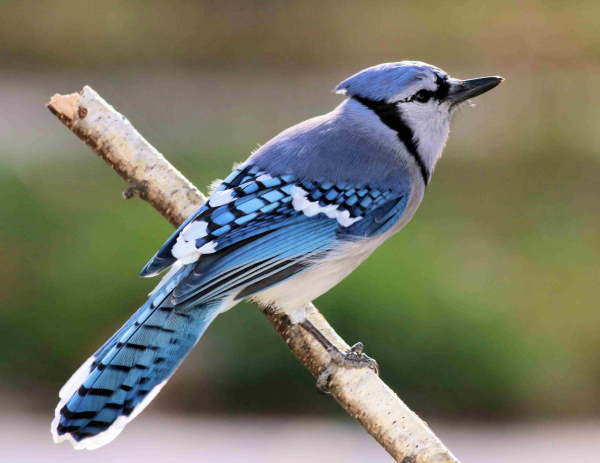
Blue Jays are one of the most abundant passerine birds being counted at Hawk Ridge now, along with Cedar Waxwings, Pine Siskins, American Robins, and Yellow-rumped Warblers.
|
You can follow along with the pulses of bird migration, including all species of birds reported individually, with live updates and hourly, daily, and seasonal totals provided online from the Hawk Ridge Bird Observatory website. Famous for its raptor counting station, Hawk Ridge biologists also identify and count all other birds that passes by the ridge above the western edge of Lake Superior in Duluth, Minnesota. Already this fall, 149 species of birds have been counted, including more than 158,000 birds total!
For example, on September 11th a total of 5,624 Blue Jays were counted with more than 2,000 passing by during one morning hour – plus more than 48,000 Blue Jays have been tallied already this fall. Whether you’re interested in the migration of goldfinches, robins, warblers, swallows, jays, flickers, nighthawks, geese, pelicans, hawks, or eagles, it’s fun and interesting to see what’s happening on The Ridge throughout the months of fall migration. Checking in periodically can also provide a sense of what birds are on the move cross-country, and what species to expect soon in areas to the south.
In fact, the Live Updates are listed with the most recent sighting at the top, so you can scroll the list to get a feel for how the migration progresses over an hour or whatever period you wish. You will find an interesting, ever-changing mix of observations that might follow a scenario such as: 2 American Goldfinches, 58 Blue Jays, 1 Sharp-shinned Hawk, 14 Common Grackles, 40 Pine Siskins, 1 Sharp-shinned Hawk, 7 Common Grackles, 1 American Robin, 24 Blue Jays, 1 Sharp-shinned Hawk, 1 Peregrine Falcon, 1 Sharp-shinned Hawk – all within a random 6 minute period Sunday morning. There are a number of other interesting presentations that you can check out too, including Species Composition pie charts, Hourly Data lists, Daily Count graphs, and Weather data.
What’s the attraction for birds at Hawk Ridge? As birds migrate south, primarily from northern forests in Canada, when they reach the north shore of Lake Superior, one of the largest lakes in the world, rather than cross the vast expanse of water, birds funnel in ever-greater numbers along the north shore of the lake and the adjacent ridges of the Sawtooth “Mountains.” Hawk Ridge is located where the southern edge of the eastern ridge meets the west end of Lake Superior on the outskirts of the city of Duluth. The funneling effect makes Hawk Ridge an excellent location to observe concentrations of migrating birds during fall, and this count site usually is among the top three migration monitoring sites north of Mexico (north of Veracruz).
To check out the live migration reports, and hourly, daily, and seasonal totals provided online from the Hawk Ridge Bird Observatory, visit https://dunkadoo.org/explore/hawk-ridge-bird-observatory/migration-count-fall-2020 and you can get information about the Hawk Ridge Bird Observatory at https://www.hawkridge.org/